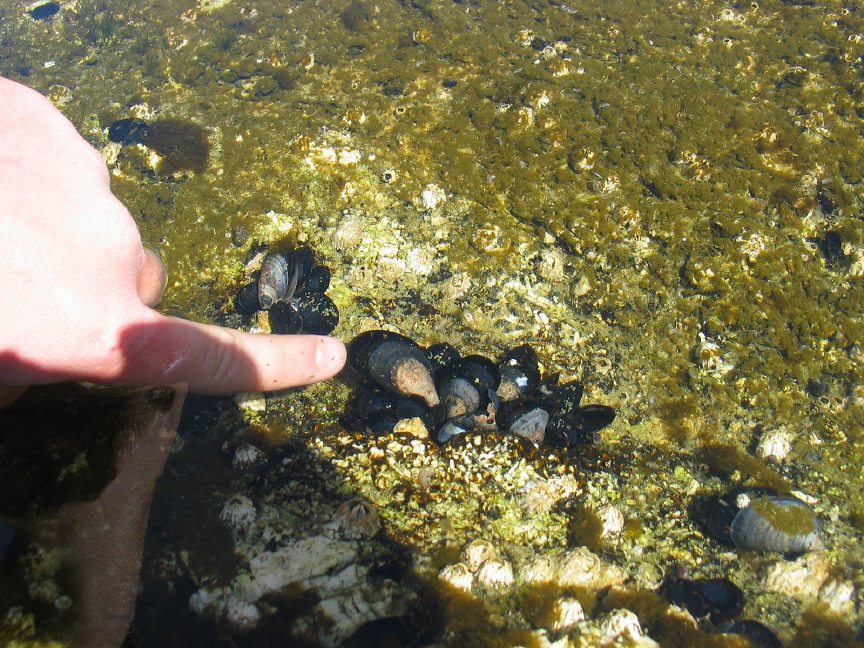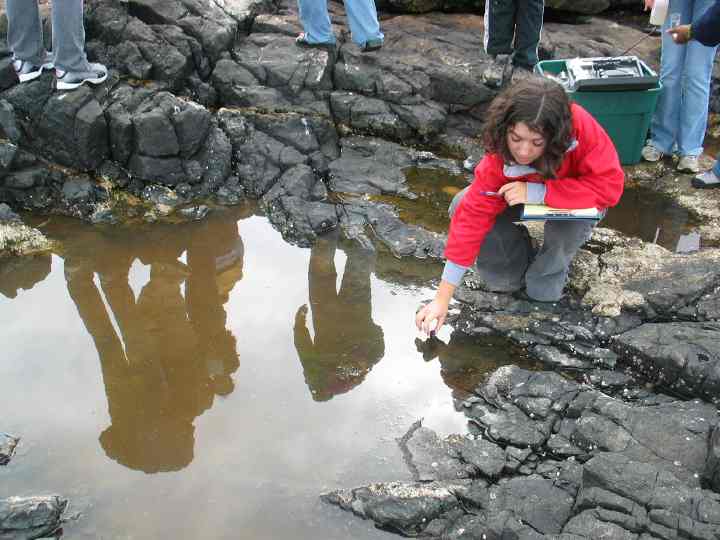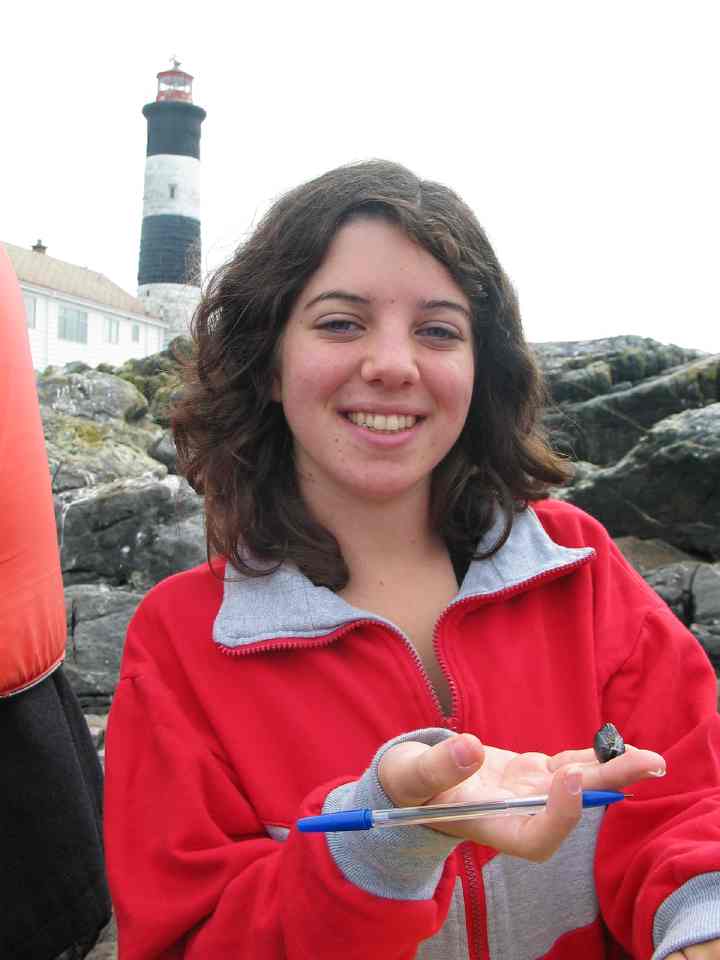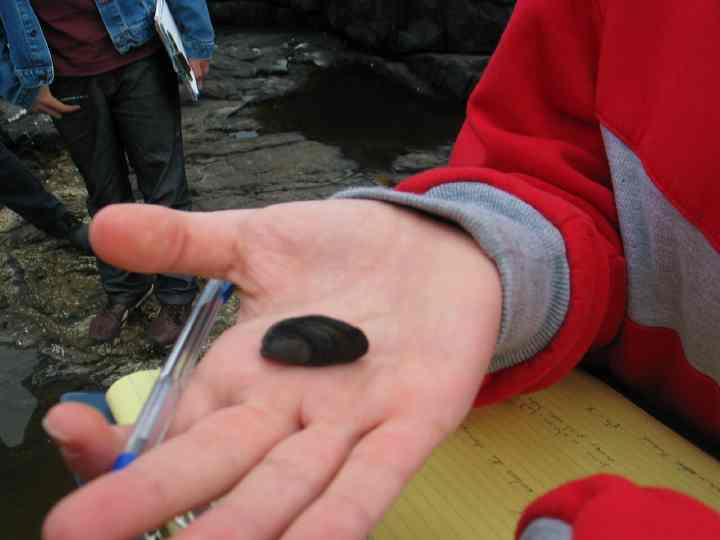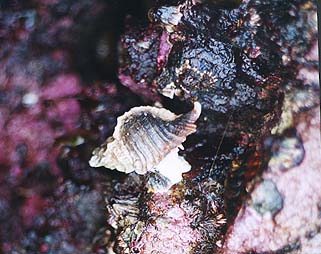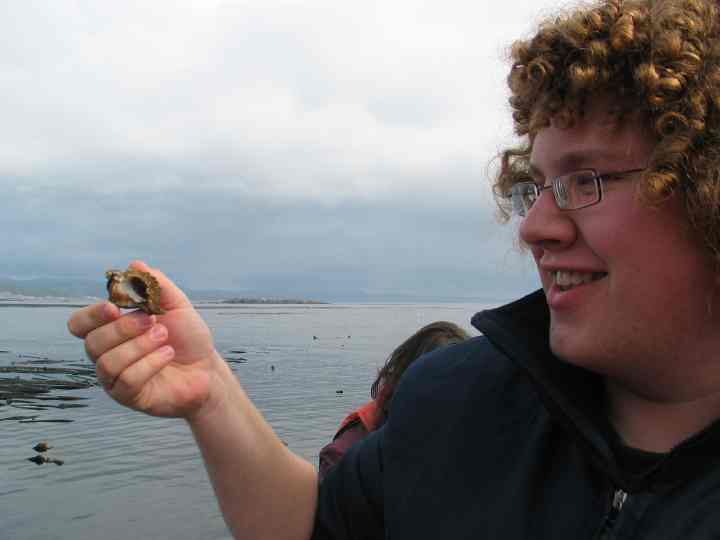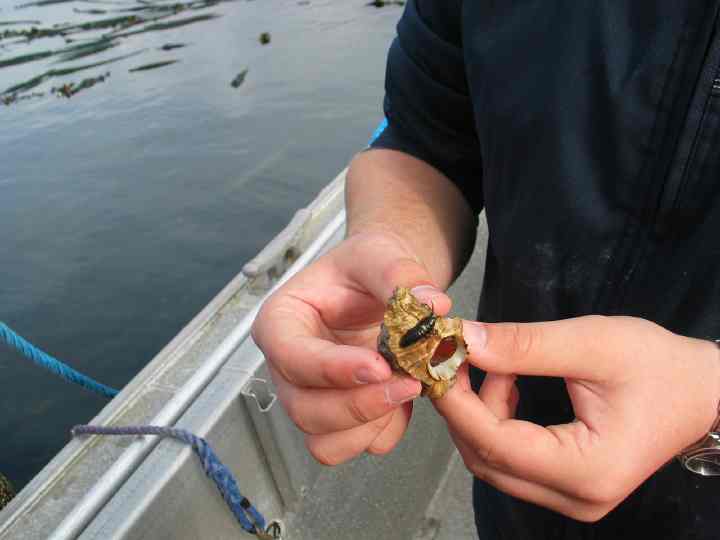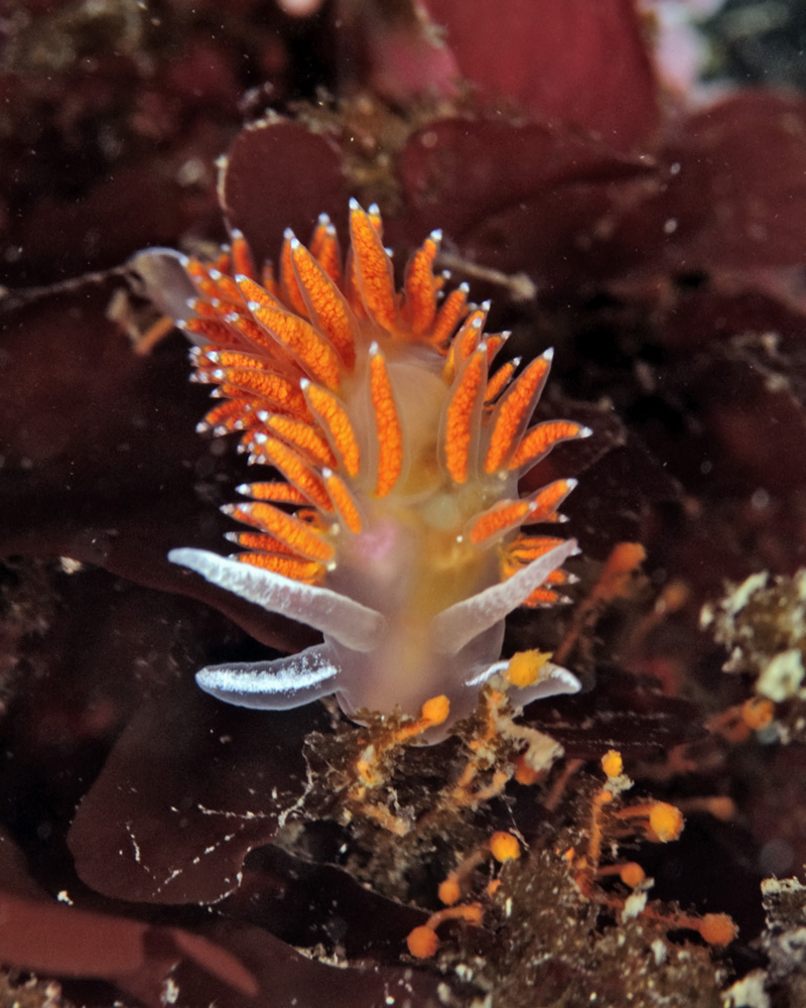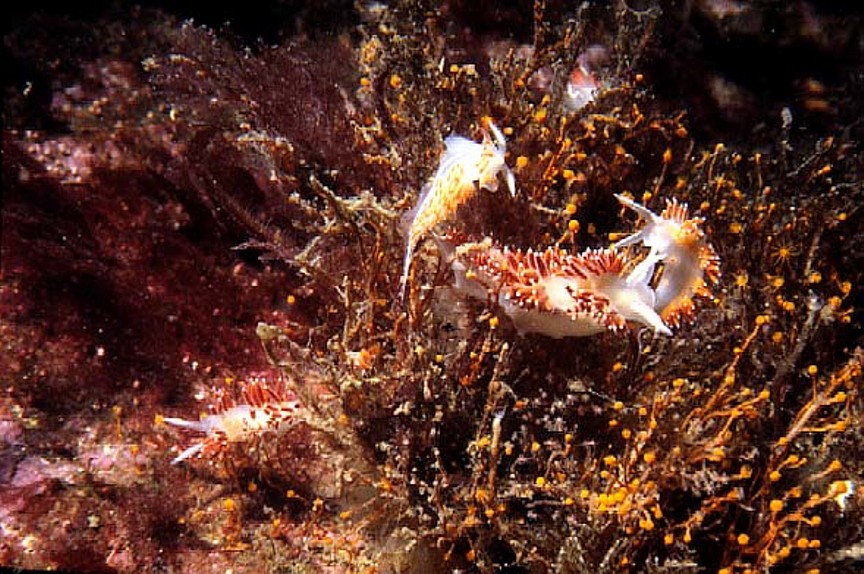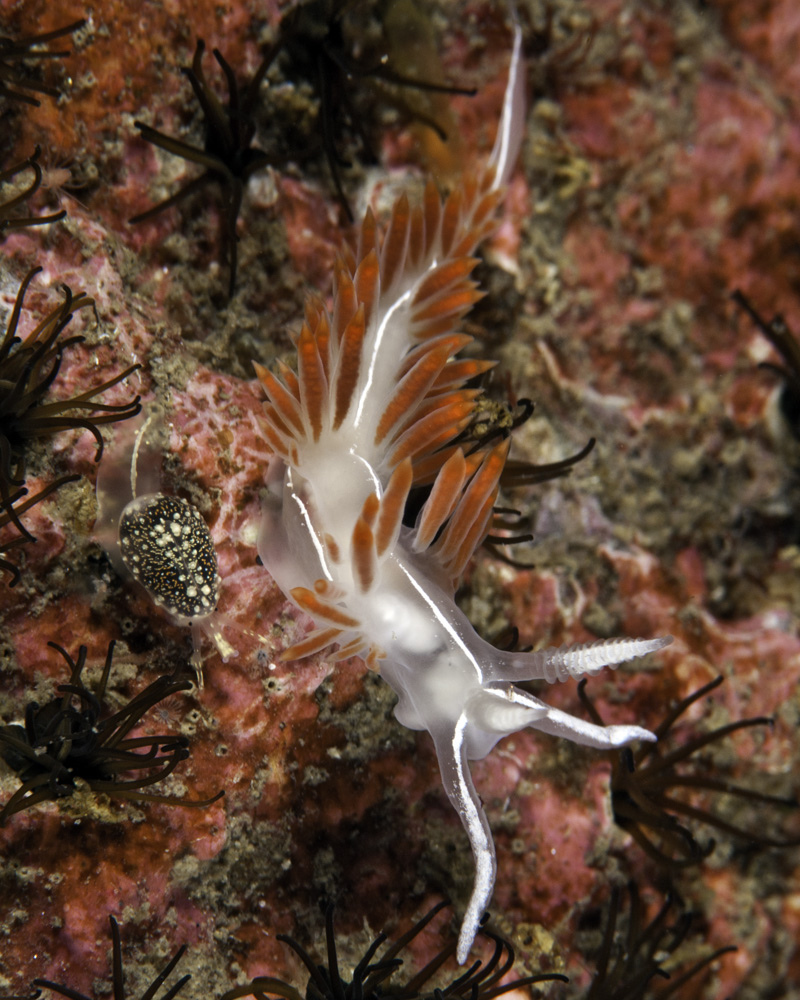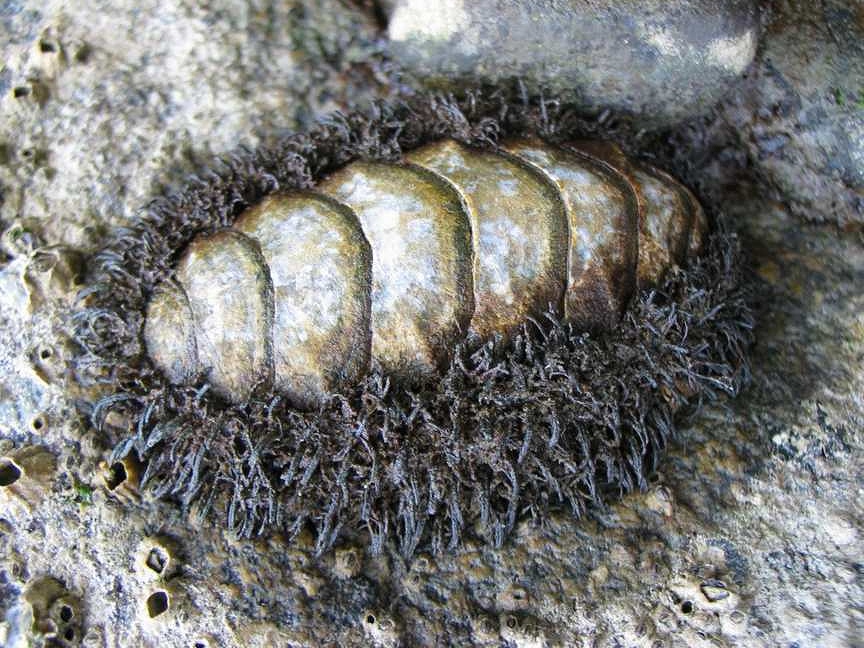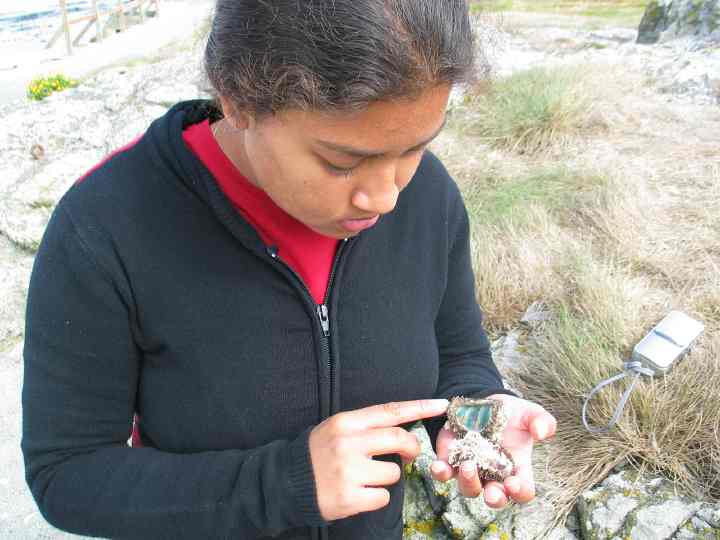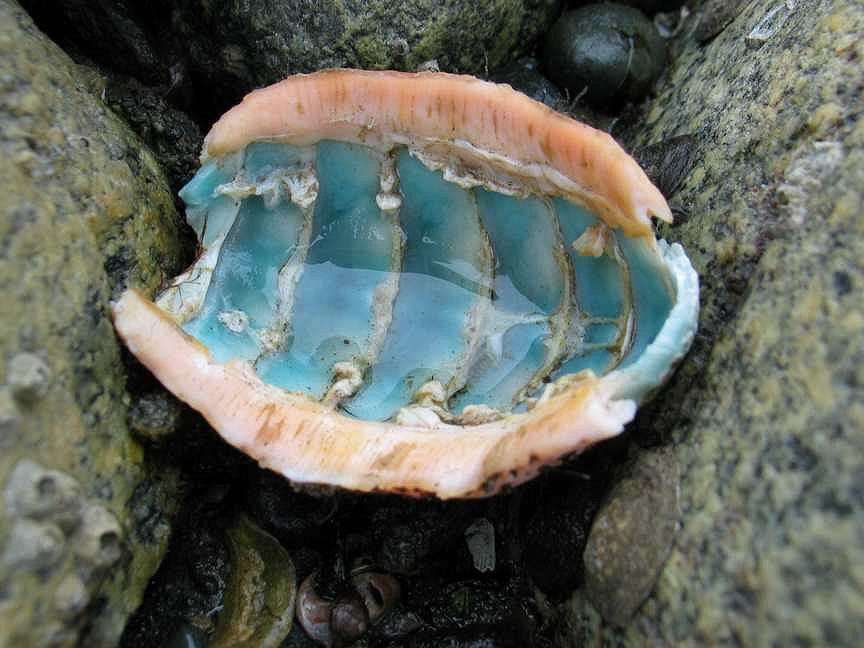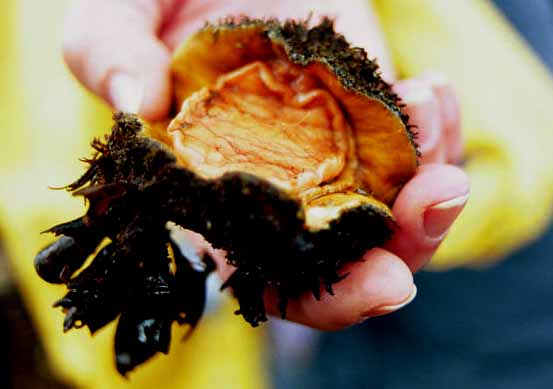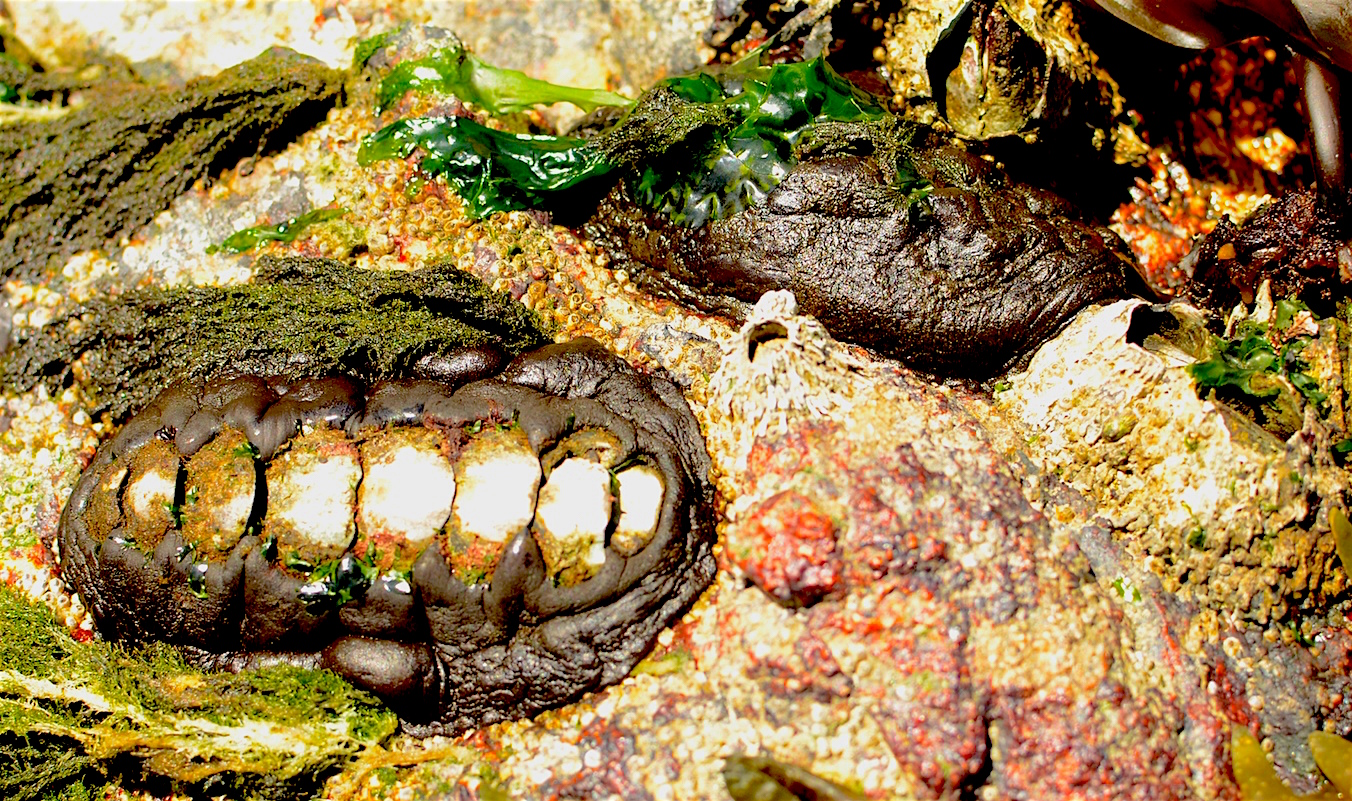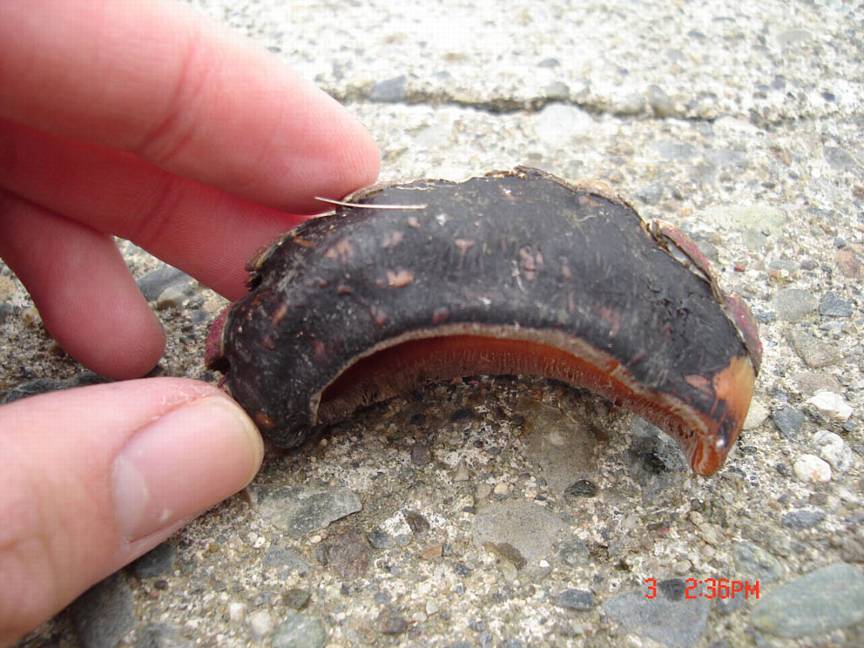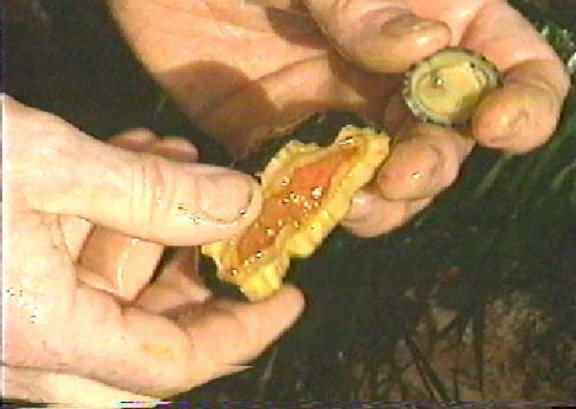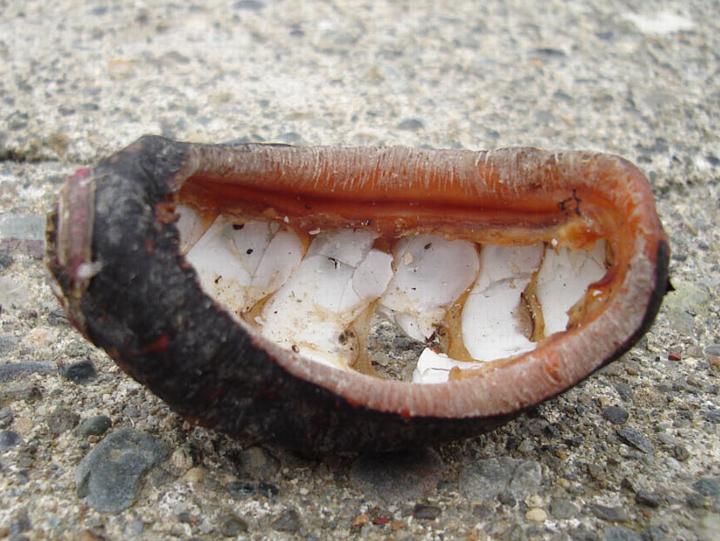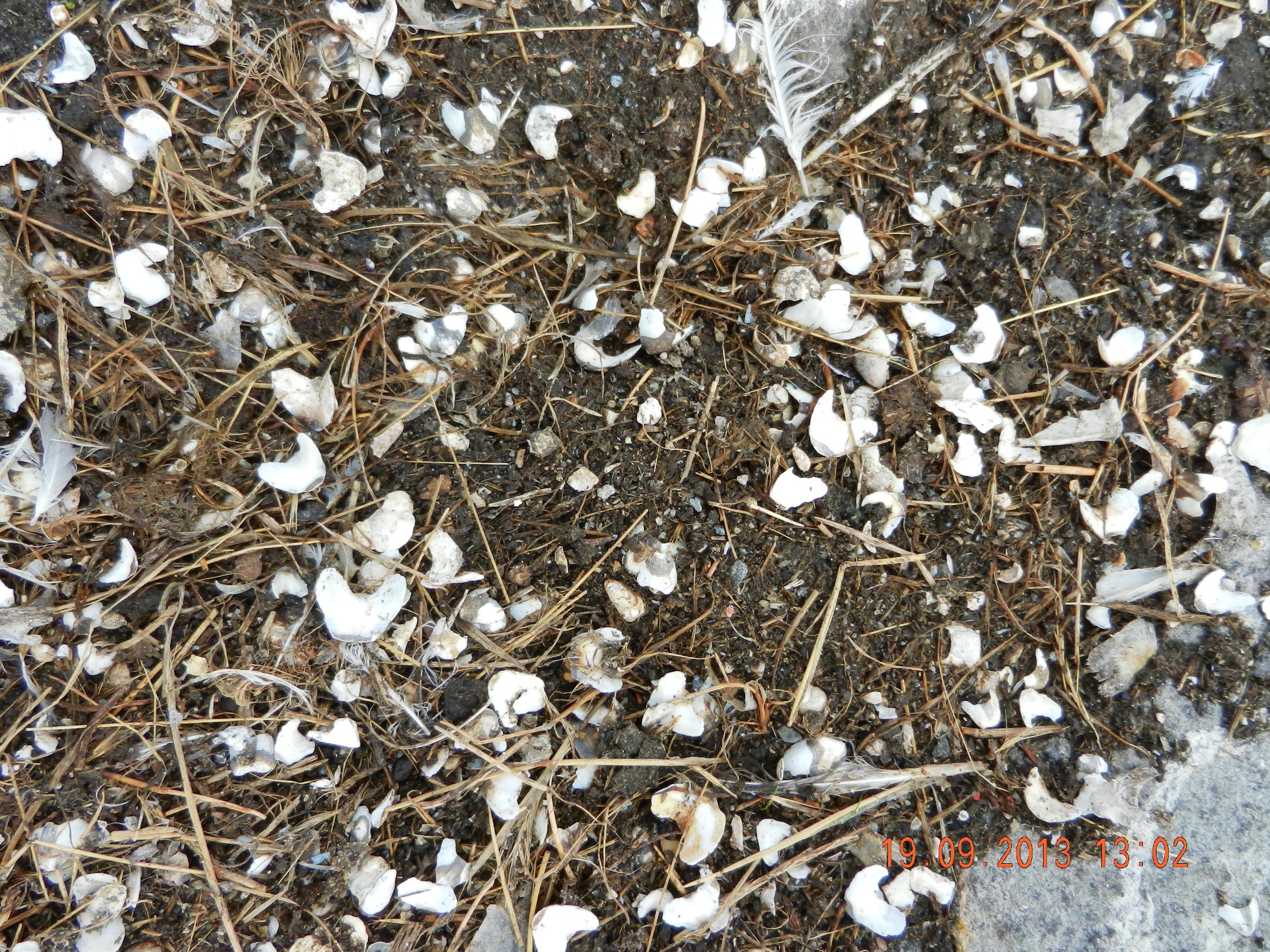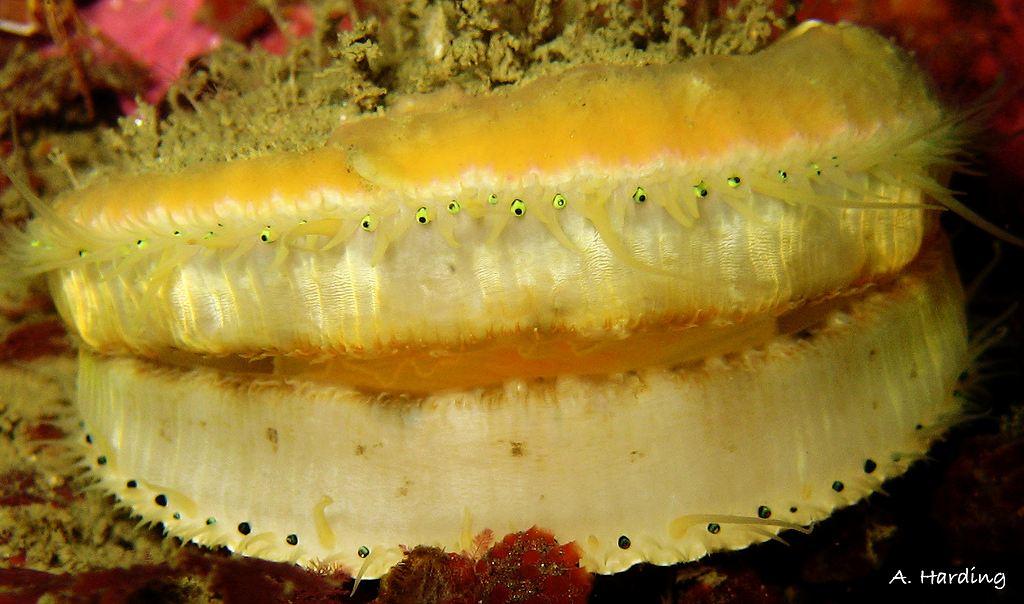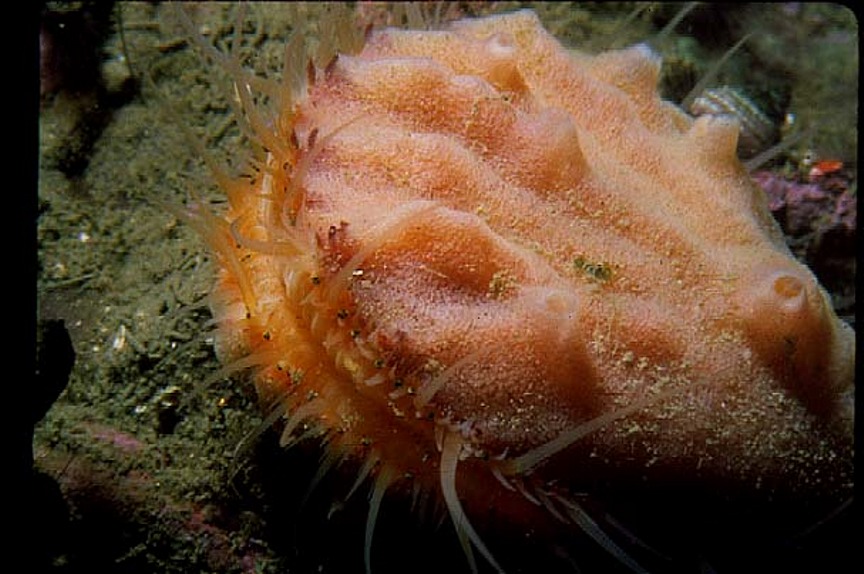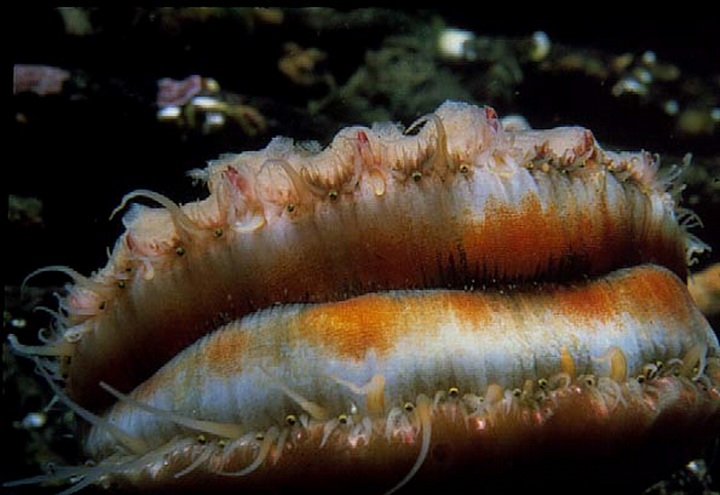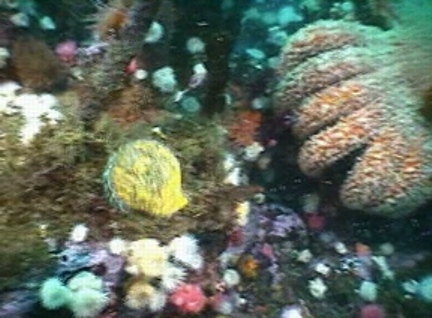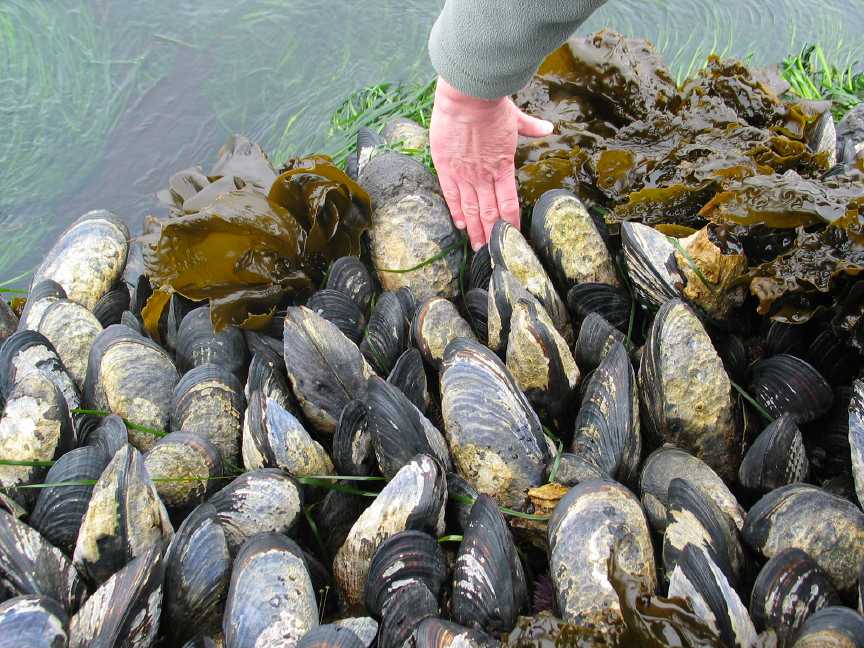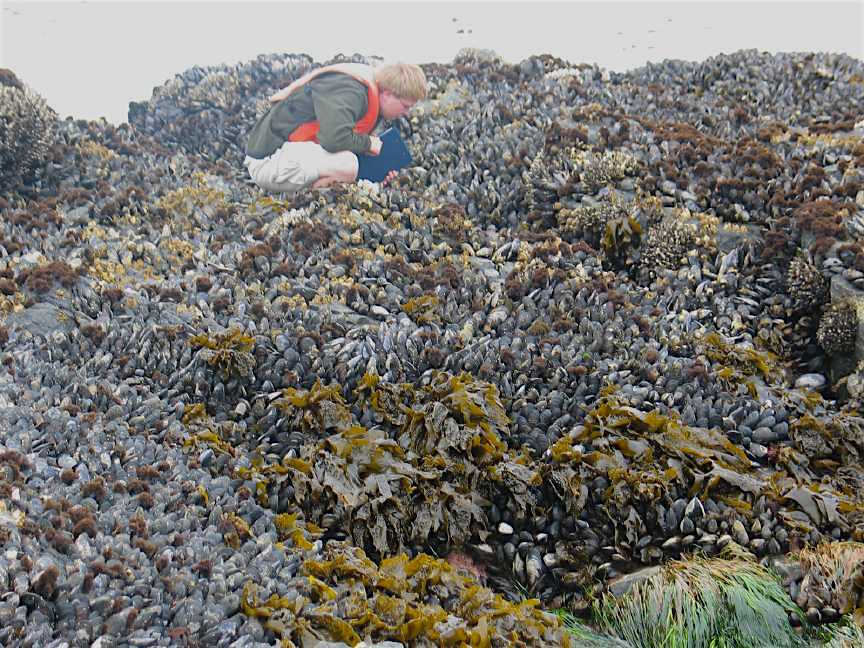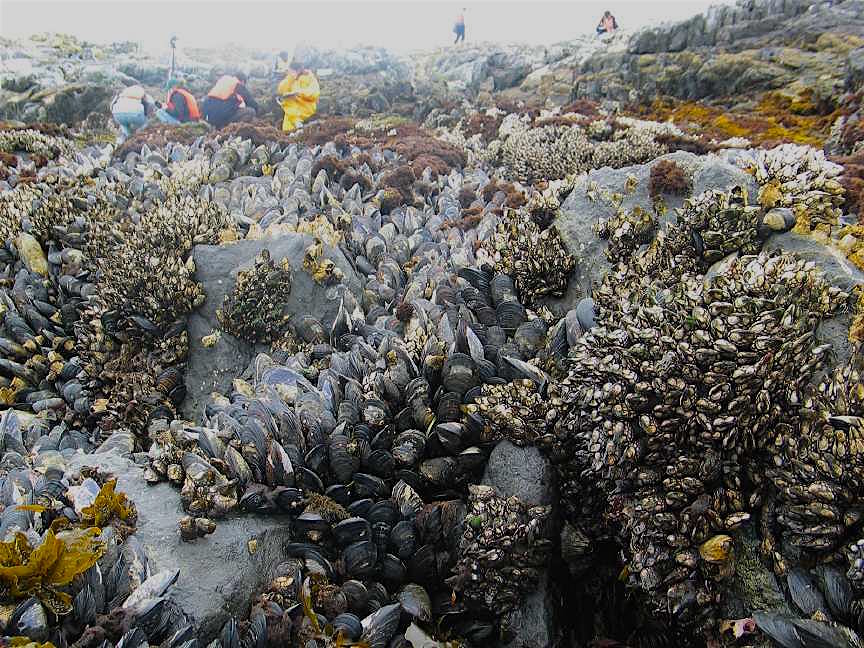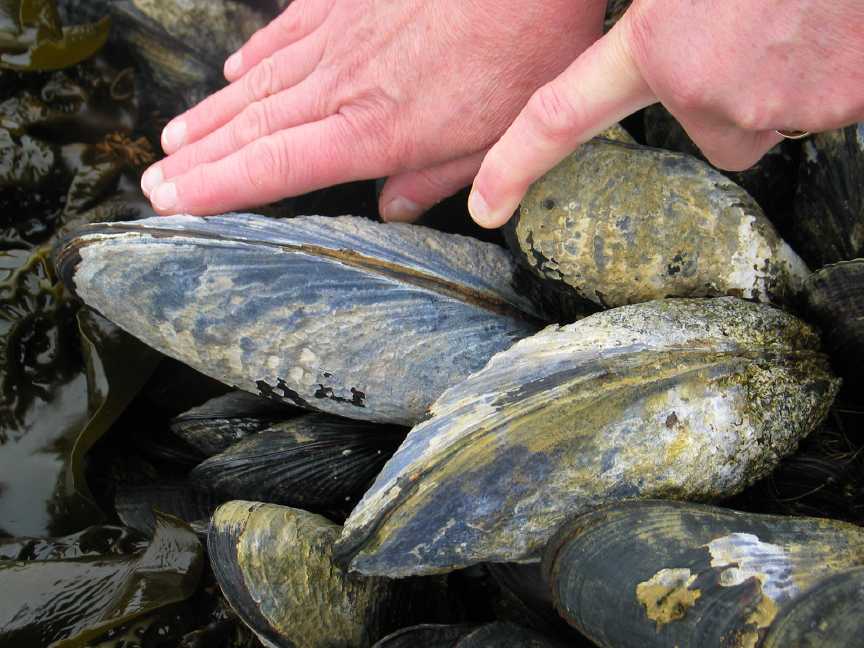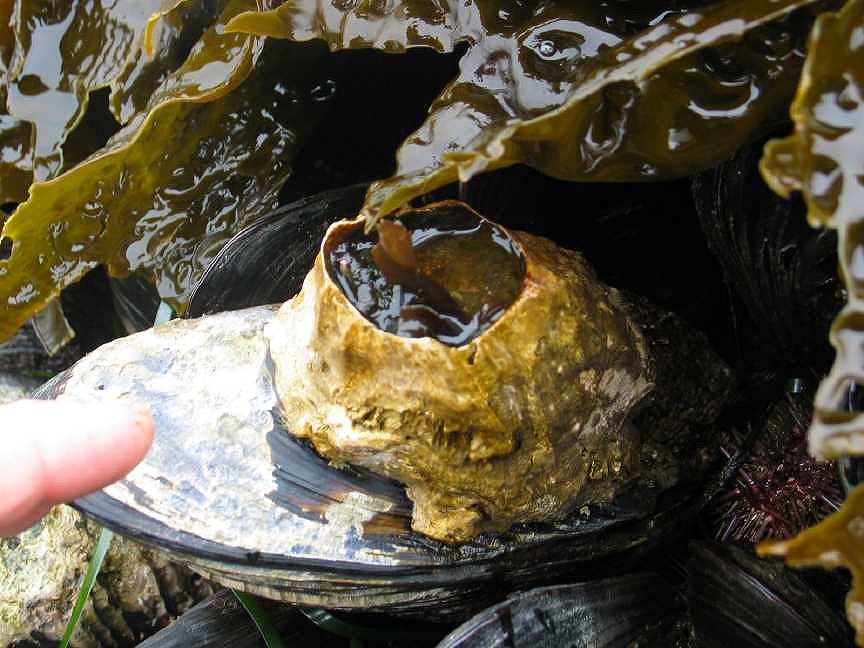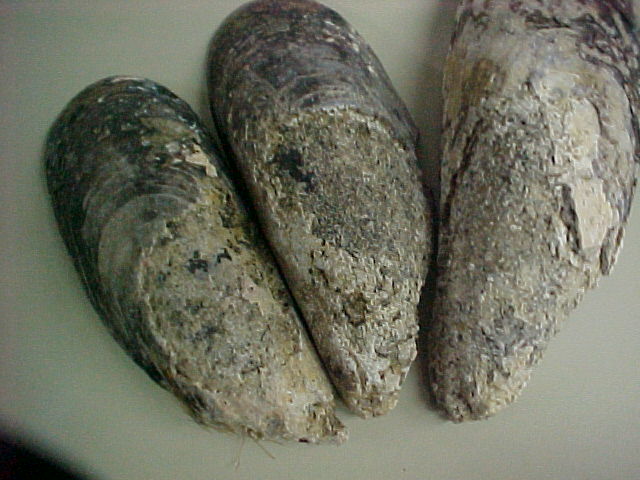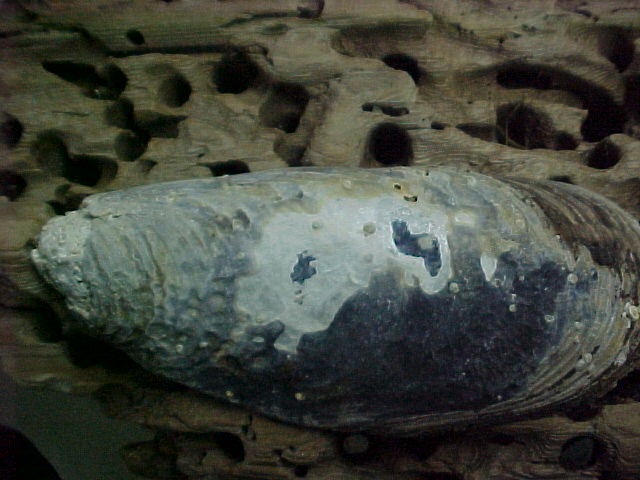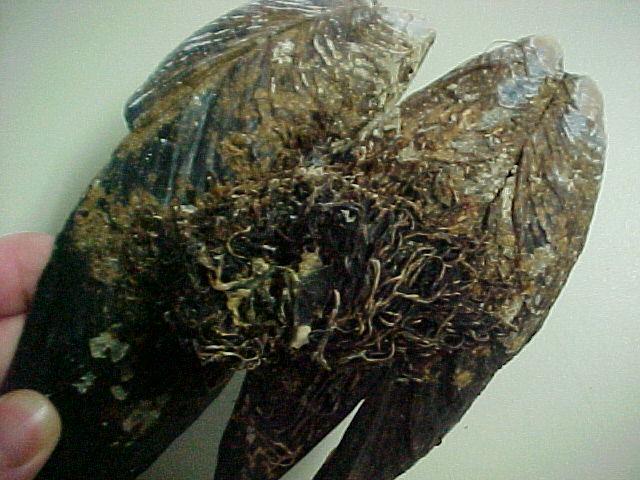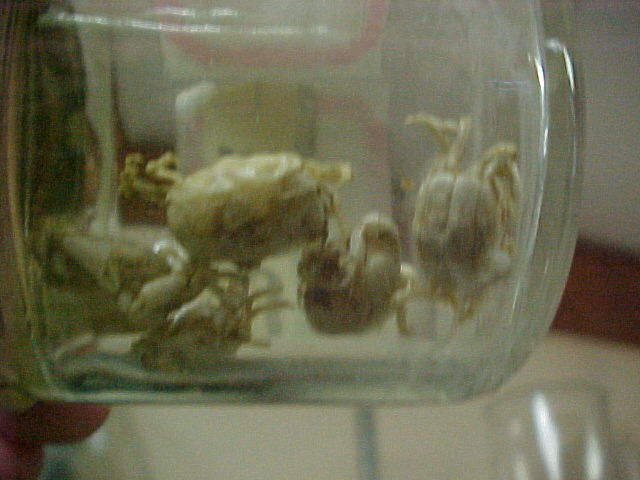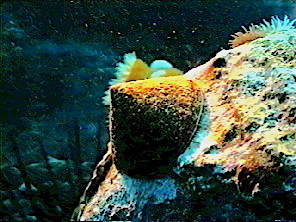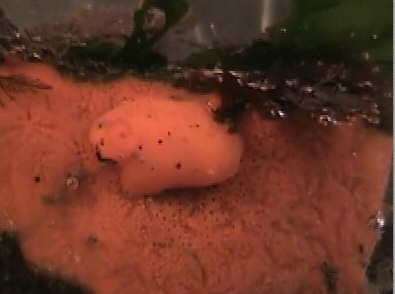
It is almost always found in association with the red encrusting sponge Ophlitaspongia
Physical Description:
The red sea slug is oval and commonly recognized by its bright color either red, orangish, or scarlet. But it is not uncommon to find some lighter colored species. It matches the texture and color of the sponge that it feeds on. Its body usually measures from 10 to 30 millimeters long. The back of some of the specimens can be covered with sprinkling black specks that stand out more in lighter colors. Their dorsum is covered with caryophilletic tubercules, which gives it a velvety texture. Their unique feature is their rhinophores (organs of the smell) that have vertical perfoliations.
Global Distribution: The red sea slug is dispersed all throughout the Pacific coast of North America from Alaska south to Argentina and Chile. Concentrated especially in Vancouver Island (British Columbia) and Puertecitos (Baja California)
Habitat: They are usually found on the colored red siliceous sponges they feed on, that are encrusted under rocky edges.
Feeding:
Rostanga pulchra feeds on red sponges. Ophlitaspongia pennata, Esperiopsis originalis, Plocamia karykina, and also on Acarnus erithacus and Isociona lithophoenix. It can locate the food from distance by scent. It first removes the top part of the sponge to leave a shallow groove.
Predators:
The predaceous cephalaspidean Navanax intermis can be reppelled by the Rostanga by non-acid secretions.
Reproduction:
The red sea slug is oviparous. The color of the eggs is similar to the color of the slug as well as the one of the sponge. It breads year round. The cylindrical eggs strands (2,000 to 13,000 egg capsules) are laid in a spiral pattern on the sponge they feed upon. The egg development is influenced by temperature: the warmer the shorter the development is. The eggs then develop into a larvae called veliger and drifts as plankton in the sea. The larvae will then settle and metamorphose in a suitable environment.
One interesting Fact: Like all nutribranchs, the Rostanga pulchra is hermaphrodite, which means that it has both female and male sex organs, thus their chances of meeting a potential mating partner increase. But self fertilization remains very rare.
References:
<oceanlink.island.net/oinfo/nudibranch/nudibranch.html>
<http://www.seaslugforum.net/display.cfm?id=9337>
<slugsite.us/bow/nudwk379.htm >
<www.calacademy.org/research/ izg/SFBay2K/Rostanga%20pulchra.htm>
<people.wwc.edu/…/Mollusca/GastropodaOpisthobranchia/Nudibranchia/Doridacea/Rostanga_pulchra.htm>
<www.racerocks.com/racerock/ eco/taxalab/2005/rostangap/rostangap.htm>
<www.metridium.com/monterey/nudibranchs/rostanga
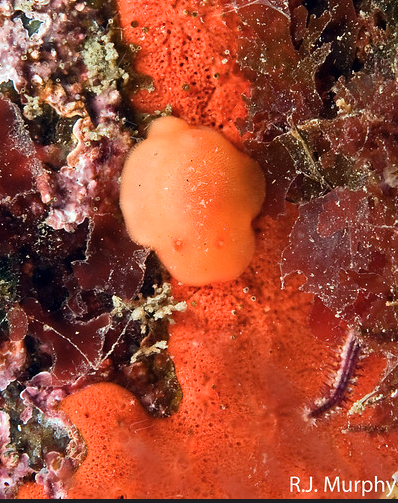
<em><strong>Other<a href=”https://www.racerocks.ca/category/species/class-mollusca/”> Members of thePhylum Mollusca</a> at Race Rocks.</strong></em>
<table>
<tbody>
<tr>
<td><a href=”https://www.racerocks.ca/race-rocks-animals-plants/taxonomy-image-gallery/”><img class=” wp-image-17530 alignleft” src=”https://www.racerocks.ca/wp-content/uploads/2014/11/taxonomyicon-300×91.jpg” alt=”taxonomyicon” width=”201″ height=”68″></a><a href=”https://www.racerocks.ca/race-rocks-animals-plants/taxonomy-image-gallery/”><strong>Return to the Race Rocks Taxonomy
and Image File</strong></a></td>
</tr>
<tr>
<td><a href=”http://pearsoncollege.ca/” target=”_blank”><img class=”alignleft wp-image-5251″ src=”https://www.racerocks.ca/wp-content/uploads/2013/05/pearsonlogo2_f2.jpg” alt=”pearsonlogo2_f2″ width=”121″ height=”73″></a><strong>The Race Rocks taxonomy is a collaborative venture originally started with the Biology and Environmental Systems students of <a href=”http://pearsoncollege.ca/” target=”_blank”>Lester Pearson College UWC</a>. </strong><strong>It now also has contributions added by Faculty, Staff, Volunteers and<a href=”https://www.racerocks.ca/category/ecoguardians-log/visitor-observations/”> Observers </a>on the<a href=”https://www.racerocks.ca/video-cameras/” target=”_blank”> remote control</a> <a href=”https://www.racerocks.ca/video-cameras/”>webcams. </a></strong>
<strong><a href=”https://www.racerocks.ca/video-cameras/”>This file was originally started by
Rachel de Silva PC yr32
, Dec. 2005.</a></strong></td>
</tr>
</tbody>
</table>

